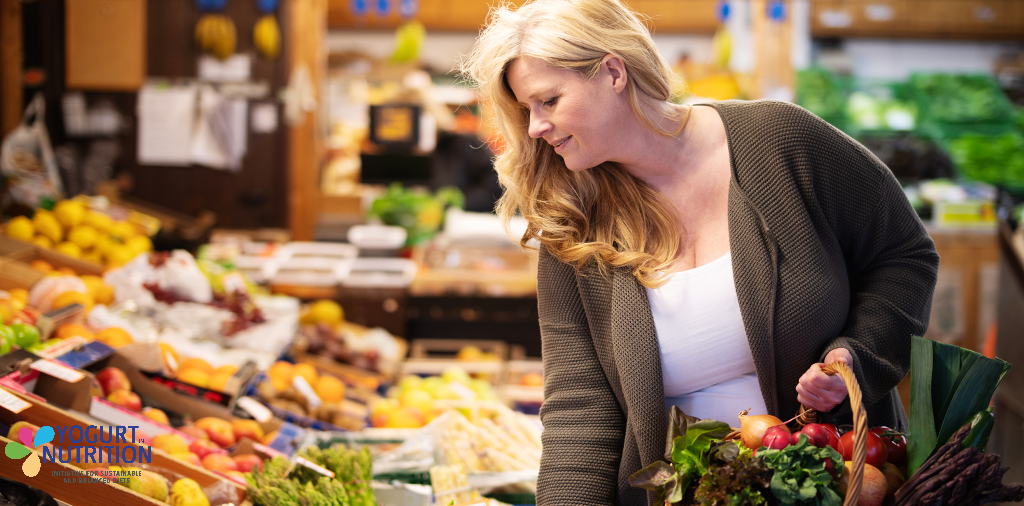As we watch dramatic footage of majestic polar ice cliffs collapsing into the sea, we all know it is time to take action to protect our planet. But how?
Well, the good news is that we can make a big difference through changes in what we choose to eat, and that in so doing, we can also help protect our own health. What is less certain is exactly what these changes should be, so scientists are working to model diets that are good both for us and for the planet.
Linking food to climate change targets
Our food system is a major contributor to greenhouse gas emissions (GHGE), such as carbon dioxide and methane, which are responsible for global warming. The official target is to keep global warming below 1.5°C and, to achieve this, the Intergovernmental Panel on Climate Change has set GHGE targets for 2030 and 2050 (-50% in 2030 and -80% in 2050).
However, designing diets that meet these targets, and are nutritionally adequate, is challenging and will require major breakthrough innovations in agriculture production and food technology as well as increase fortification of specific foods, say the authors of this study. They believe that diets should be developed country-by-country and take account of what is culturally acceptable in each nation. Such a tactic may lead to better adoption of the needed changes than would be achieved by a global approach, the authors point out.
How healthy is the Dutch diet?
This study examined the changes that will be needed in the Netherlands to achieve the 2030 and 2050 food system GHGE targets. The dietary intakes of Dutch adults from a survey conducted in 2007–2010 were used as the baseline diet. Then the authors used computer modelling to design diets that were both nutritionally adequate and produced GHGE levels that were below the targets, while following the current dietary patterns as closely as possible.
Less meat and more vegetables to meet GHGE targets
The baseline diet did not meet all nutritional requirements. It was too high in energy, saturated fat and salt, and did not contain enough fibre, omega-3 fatty acids, vitamins B1 and B2, folate, iron and selenium.
The nutritional adequacy of the baseline diet would be reached if people ate more vegetables, fish and shellfish, legumes (peas and beans), soy foods and tree nuts, and if they gave up butter. However, even though this diet has lower GHGE it does not fulfil the 2030 GHGE target.
Reaching a nutritionally adequate diet while also achieving the 2030 GHGE target would require Dutch people to eat more peanuts and soy drink (fortified with vitamin B12 and calcium), less pork and cheese, and no beef or snacks. People could continue to eat liquid dairy (yogurt and milk), grains and starches, eggs and fruit as they do now.
The food-chain interdependency diet scenario (dairy production requires beef meat production) show that 373g liquid dairy produced requires 8g of beef meat production which is compatible with a flexitarian dietary pattern.
The modelling suggested that more wide-sweeping changes would be needed to meet the 2050 food system GHGE and the nutritional targets. People would have to cut out cheese, chicken, pork, eggs, legumes, soy foods, sugar and confectionary, soups and bouillon, and condiments and sauces – and eat even more vegetables, tree nuts and soy drink. However, such radical change and drastic loss of food diversity would probably not be suitable and acceptable for most people.
Breakthrough innovations will be needed
Previous studies that have examined healthy sustainable diets and their compatibility with maintaining planetary health have focused on diets based on food commodities (eg, cereals, dairy, meat) such as the EAT Planetary Health Diet or the IDDRI TYFA Diet. In contrast, this new study relied on typically-consumed foods and aimed to ensure nutritional adequacy. Although focusing on food commodities is easier, the approach taken in this new study is more precise and provides more realistic optimised diets.
However, this study also shows that designing acceptable diets meeting strict ambitious GHGE targets (-80% in 2050) is not straightforward. It will require breakthrough innovations to improve food production practices and create new food processing techniques and attractive foods.
‘… reducing consumption of beef, pork, poultry, cheese, butter and snacks, and increasing consumption of legumes, fish and shellfish, peanuts, tree nuts, vegetables, soy foods and soy drinks is critical to achieve GHGE targets while maintaining a healthy eating pattern. Dairy products other than cheese, grains and starches can be consumed in amounts similar to those of the baseline diet among Dutch adults.’ – Broekema et al, 2020.



